Dental Implants Gallery
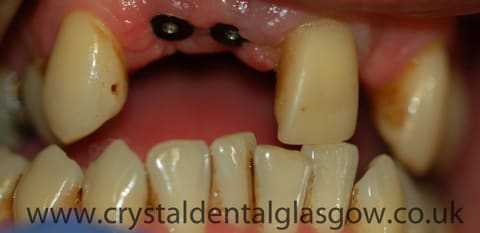
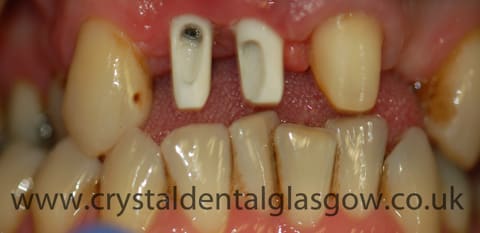
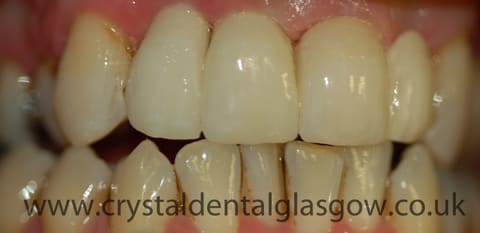
Implant Bridge with Porcelain Crowns
While a regular dental bridge is held up by your natural teeth, an implant bridge is supported by dental implants. It tends to be used when two or more teeth are missing with the implants placed in the gap with the bridge on top.
Here is an implant case in Glasgow involving two bridges attached to the implants, each supporting two implant crowns.
First you can see the dental implants in place. These are made from titanium and surgically placed in the patient's mouth. We removed the healing caps then attached the abutments.
The white peg-shaped abutments - which you can see here - were screwed on to the internal thread of the implants.
The next stage involved attaching the ceramic zirconia bridge - ceramic zirconia is a particularly strong and long-lasting material - followed by the porcelain crowns.
Our dental lab partner was closely involved at all stages of implant surgery particularly in making sure the the crowns were shaded to match the patients existing teeth. In the end the patient was delighted with the final result and thanked all the staff in our Glasgow practice.
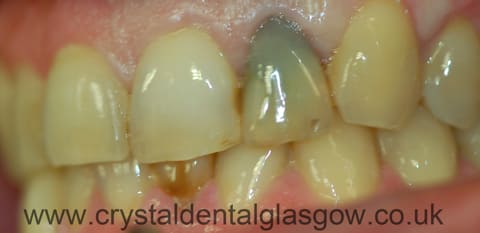
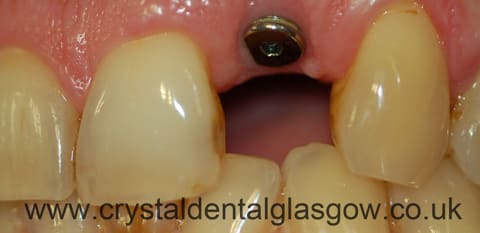
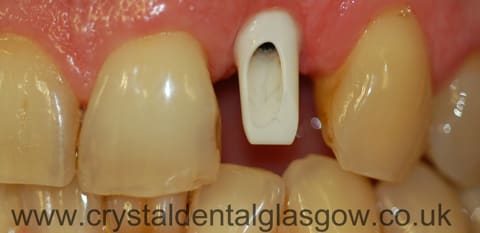
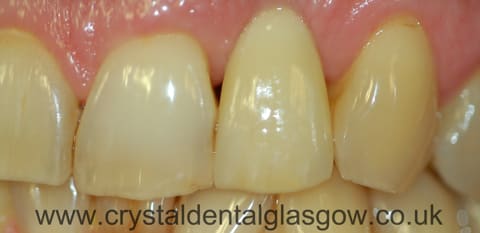
Single Tooth Implant
Our implantologist frequently places a single dental implant in cases where a tooth has become damaged or even knocked out thanks to an accident or a sports injury.
Or perhaps the tooth is badly decayed or cracked or, as in this case, where the tooth is infected and badly discoloured.
You can see the problem in the first photograph.
To place the implant the dental surgeon makes a tiny incision into the gum to give access to the bone.
He then drills a small hole for the titanium implant to fit perfectly in place.
The gum is stitched back and he adds a cap over the implant to protect it while the patient's mouth heals.
Two and a half months later, Dr Murphy placed the ceramic abutments you can see in the third photograph followed finally by the porcelain crown which had been matched to the patient's other teeth.
